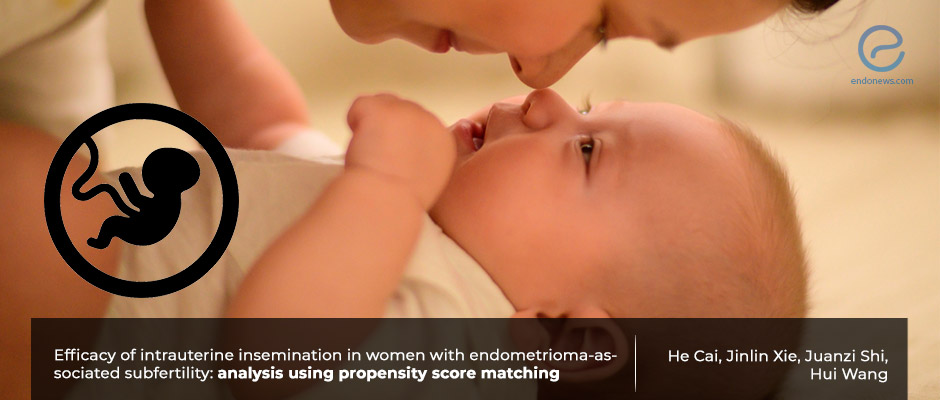Is intrauterine insemination effective in women having endometriosis-associated infertility?
Mar 4, 2022
Intrauterine insemination may be a good choice in subfertile women with endometrioma
Key Points
Highlights:
- Since intrauterine insemination is less expensive and less aggressive than in-vitro fertilization, it can be offered as a first-line treatment option in subfertile women with endometrioma.
Importance:
- The women undergoing assisted reproductive technologies treatment should be informed about the success rate of intrauterine insemination when there is no other infertility factor other than endometrioma.
What’s done here?
- This aims to clarify the success of intrauterine insemination in subfertile women with endometrioma and no other identifiable infertility factors.
- The endometrioma was diagnosed by laparoscopy or a combination of physical examination and ultrasonography.
- Intrauterine insemination was performed by the same two experienced clinicians in natural or stimulated cycles.
- Clinical pregnancy rate per cycle and cumulative pregnancy rates were compared between the endometrioma and the control group.
- Subanalysis was also performed according to whether it was a natural or stimulated cycle.
Key results:
- The Endometrioma group (n=56 women) was compared to the matched controls (n=173 with unexplained infertility); with similar demographic and clinical characteristics.
- 87 cycles of intrauterine insemination were performed in the endometrioma group; 280 in the control group.
- Women having endometrioma had a lower clinical pregnancy rate per cycle than controls, with a borderline statistical significance.
- Intrauterine insemination with or without stimulation had no significant effect on pregnancy rates.
- The first-two cycles of Intrauterine insemination were successful for pregnancy in women with endometrioma-associated subfertility.
- Patients with endometrioma were twice more likely to converse to IVF.
- The size and number of unilateral or bilateral endometriomas and the surgical history prior to intrauterine insemination did not affect the conception rate.
Strengths and Limitations
- This is the first study to investigate the effectiveness of IUI on the pregnancy rate in women having endometriosis-associated infertility.
- The small sample size in a local population is the limitation of this study.
Lay Summary
The most common presenting complaints of women with endometriosis are dysmenorrhea, dyspareunia, chronic pelvic pain, and infertility. Affected women demand therapy for these symptoms of endometriosis, notably fertility problems. Several underlying mechanisms have been proposed to explain endometriosis-associated infertility including anatomic distortion, diminished tubal peristalsis, diminished sperm movements, dysfunctional folliculogenesis, luteal phase dysfunction, and alterations in endometrial receptivity.
In vitro fertilization or intracytoplasmic sperm injection techniques have been preferred in women with moderate or severe endometriosis while intrauterine insemination with or without stimulation has been performed in women with minimal or mild endometriosis.
Cai et al, from China, published a study titled as “Efficacy of intrauterine insemination in women with endometrioma‑associated subfertility: analysis using propensity score matching” in the journal named BMC Pregnancy and Childbirth. The authors sought to evaluate the efficacy of intrauterine insemination in women having minimal or mild endometriosis. The participants were matched by the propensity score, and the patients with endometrioma compared to the controls.
The presence of endometrioma decreased the clinical pregnancy rate per cycle with a borderline statistical significance. Intrauterine insemination with or without stimulation had no significant effect on pregnancy rates in both groups. Conversion to IVF was twice more likely in women with endometrioma than those without the disease. The size and number of unilateral or bilateral endometriomas and the surgical history prior to IUI had no effect on the conception rate.
“Intrauterine insemination treatment may be a viable option to achieve spontaneous pregnancy for endometrioma subfertility”, the authors concluded.
Research Source: https://pubmed.ncbi.nlm.nih.gov/34983427/
intrauterine insemination IVF IUI ICSI endometrioma subfertility pregnancy unexplained infertility in vitro fertilization endometriosis pregnancy complication

